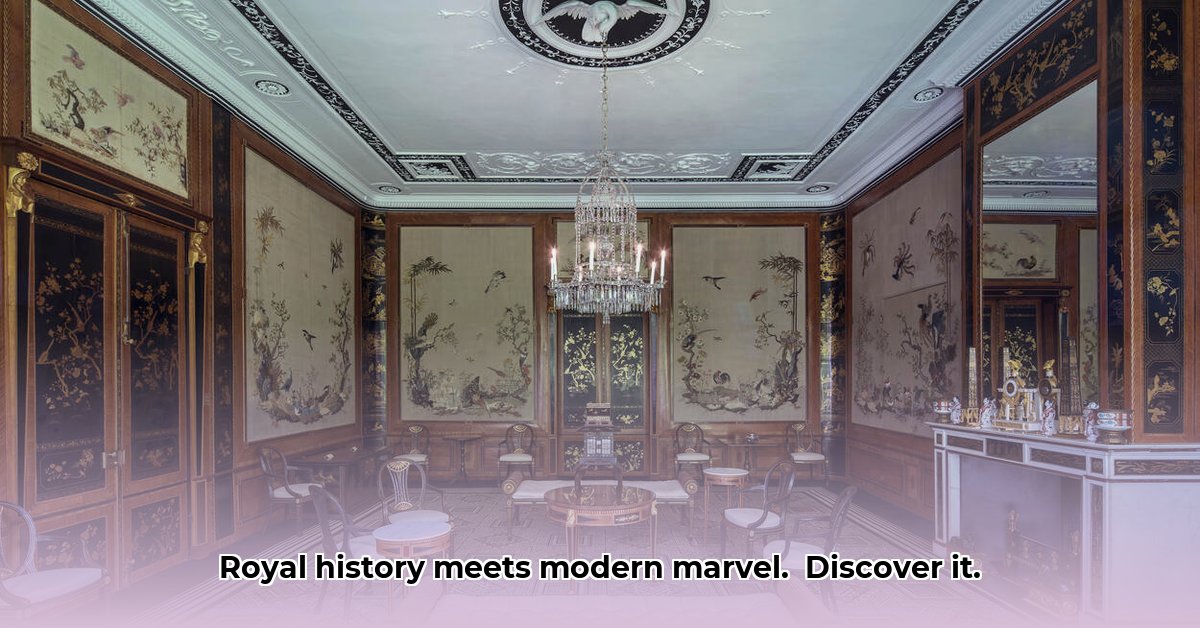
Imagine strolling through the tranquil Haagse Bos, the scent of ancient oaks filling the air, before suddenly finding yourself face-to-face with Paleis Huis ten Bosch. This isn't just any old building; it's the working residence of the Dutch King, a majestic palace whispering tales spanning centuries. It's a living testament to Dutch history, royalty, and the ongoing balancing act between preserving the past and embracing the future. But how does one actually visit this iconic landmark? Let's delve into its fascinating story, explore the challenges of maintaining such a grand residence, and uncover how you can experience this incredible slice of history for yourself.
From Humble Summer Retreat to Royal Powerhouse
Huis ten Bosch's origins are surprisingly modest. In the 17th century, it began life as a relatively small summer residence, a comfortable escape for Dutch royalty – a lavish weekend getaway, if you will. However, its significance blossomed alongside the growing influence of the Dutch monarchy. By the 18th century, extensive renovations and expansions transformed the original structure beyond recognition. This wasn’t merely cosmetic; it represented a shift from a tranquil retreat to a symbol of Dutch national identity and royal power. The serene initial building was gradually replaced by an increasingly grand structure, reflecting the ambitions of the Dutch Crown.
When War Left its Mark: A Testament to Resilience
World War II left an indelible scar on Huis ten Bosch. The palace suffered considerable damage, a devastating blow to a historically significant building. The rebuilding effort was nothing short of monumental, requiring meticulous care, skilled craftsmanship, and substantial investment. Experts painstakingly pieced the palace back together, a labour of love spanning years. The structure we admire today stands as a testament to that dedication and the resilience of the Dutch people – a triumph over destruction and a beacon of national pride.
A Palace for the Modern Monarch: Tradition and Functionality
Today, Paleis Huis ten Bosch is far from a static museum piece; it's a vibrant, functional royal residence. King Willem-Alexander, Queen Máxima, and their family call it home. This necessitates a delicate balance between historical preservation and the practical demands of modern life. The palace regularly hosts state visits, diplomatic events, and private family gatherings; a remarkable blend of grandeur and everyday functionality. This fusion of history and modern practicality is what makes Huis ten Bosch so unique – a place where history truly comes alive.
The Ongoing Battle for Preservation: A Continuous Commitment
Maintaining a palace like Huis ten Bosch is an ongoing and costly endeavor. The Dutch government, in collaboration with the Rijksdienst voor de Monumentenzorg (the Dutch Heritage Agency), works tirelessly to ensure its longevity. This involves regular assessments, meticulous planning, and seeking solutions to emerging challenges. Securing funding, addressing structural issues, and ensuring long-term stability are crucial elements of this continuous effort. Preserving this national treasure is a considerable undertaking – a significant commitment of both expertise and financial resources.
Looking Towards the Future: Challenges and Opportunities
What does the future hold for Paleis Huis ten Bosch? Its continued existence, and indeed its splendor, hinges on successfully overcoming the challenges outlined above. Long-term preservation strategies are paramount – securing adequate funding, implementing sustainable practices, and perhaps even broadening public access. Some experts suggest increased public accessibility could bolster both its financial stability and its symbolic importance. Others advocate for prioritizing the palace's structural integrity against the challenges of climate change. Ongoing research into preservation techniques and the structure's resilience will play a crucial role in shaping its future. The ongoing debate around striking the ideal balance between historical preservation and public accessibility underlines the Palace's integral connection with the Dutch people; its future rests on their shared commitment to safeguarding it for generations to come.
How to Plan Your Royal Visit: A Guide to the Experience
While an overnight stay, like President Trump’s unprecedented visit during the 2025 NATO summit (a significant event highlighting the evolving role of royal residences in international diplomacy), may be beyond most people’s reach, experiencing the grandeur of Huis ten Bosch is achievable.
- Research: Begin by exploring the palace's official website for information on public access, tours, and opening hours. Availability often varies seasonally.
- Book in Advance: Secure your guided tour well in advance, as its popularity ensures high demand.
- Respect Protocol: This is a working royal residence. Maintain appropriate decorum throughout your visit.
- Explore The Hague: Enhance your experience by exploring The Hague’s museums, gardens, and historical sites.
The preservation of Paleis Huis ten Bosch isn't merely about maintaining a building; it's about preserving a vital piece of Dutch heritage and ensuring its legacy for centuries to come. It's a powerful testament to the endurance of history, the strength of national identity, and the commitment to safeguarding a piece of the Netherlands' past for future generations.